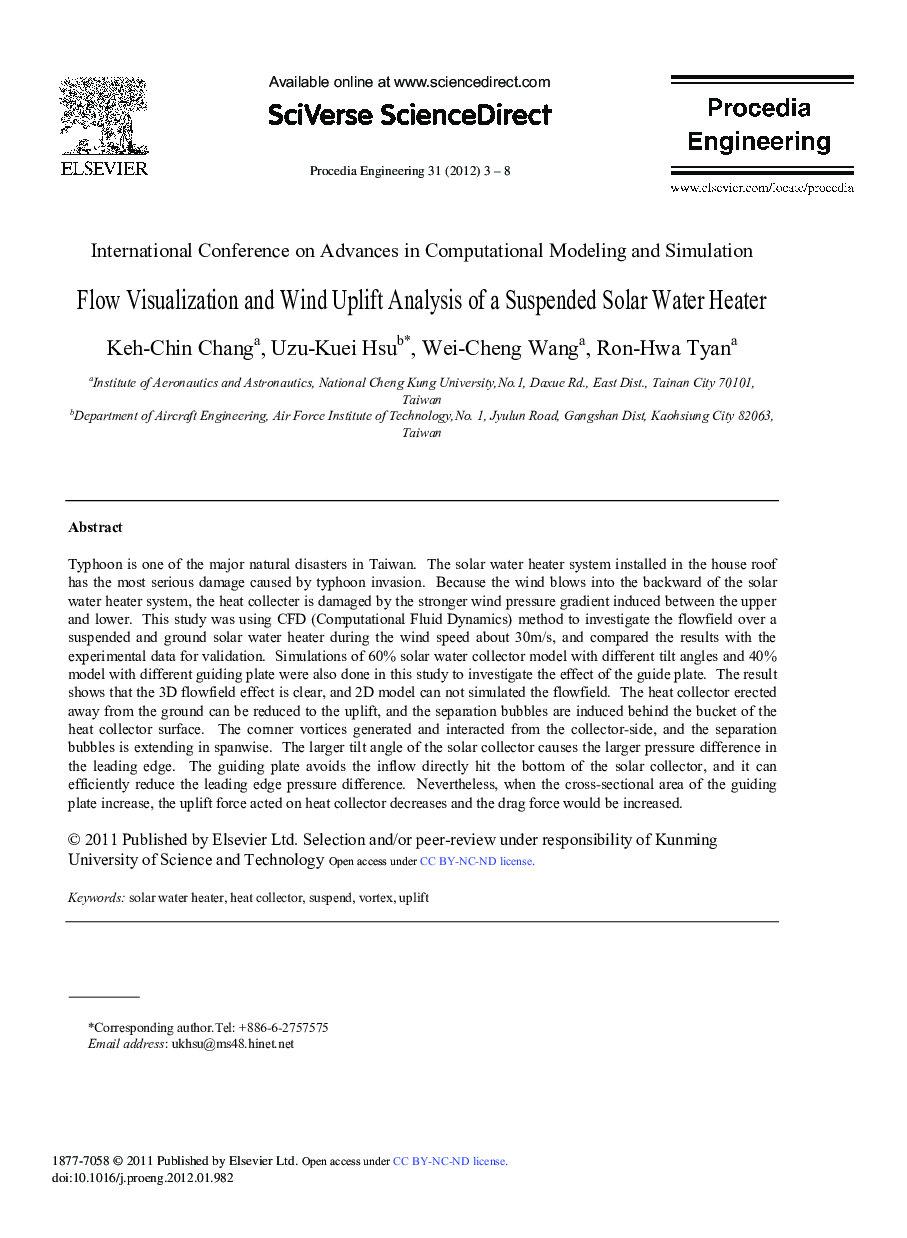| کد مقاله | کد نشریه | سال انتشار | مقاله انگلیسی | نسخه تمام متن |
|---|---|---|---|---|
| 861656 | 1470795 | 2012 | 6 صفحه PDF | دانلود رایگان |

Typhoon is one of the major natural disasters in Taiwan. The solar water heater system installed in the house roof has the most serious damage caused by typhoon invasion. Because the wind blows into the backward of the solar water heater system, the heat collecter is damaged by the stronger wind pressure gradient induced between the upper and lower. This study was using CFD (Computational Fluid Dynamics) method to investigate the flowfield over a suspended and ground solar water heater during the wind speed about 30m/s, and compared the results with the experimental data for validation. Simulations of 60% solar water collector model with different tilt angles and 40% model with different guiding plate were also done in this study to investigate the effect of the guide plate. The result shows that the 3D flowfield effect is clear, and 2D model can not simulated the flowfield. The heat collector erected away from the ground can be reduced to the uplift, and the separation bubbles are induced behind the bucket of the heat collector surface. The cornner vortices generated and interacted from the collector-side, and the separation bubbles is extending in spanwise. The larger tilt angle of the solar collector causes the larger pressure difference in the leading edge. The guiding plate avoids the inflow directly hit the bottom of the solar collector, and it can efficiently reduce the leading edge pressure difference. Nevertheless, when the cross-sectional area of the guiding plate increase, the uplift force acted on heat collector decreases and the drag force would be increased.
Journal: Procedia Engineering - Volume 31, 2012, Pages 3-8